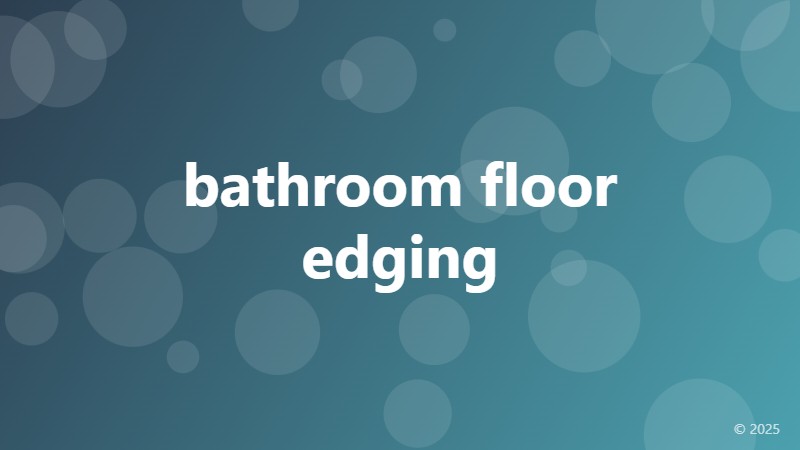bathroom floor edging

The Importance of Bathroom Floor Edging
When it comes to bathroom design, one of the most critical aspects that are often overlooked is the bathroom floor edging. Bathroom floor edging refers to the transition area between the bathroom floor and the surrounding walls or fixtures. It may seem like a minor detail, but bathroom floor edging plays a significant role in maintaining the overall aesthetic and functionality of the bathroom.
Why Bathroom Floor Edging Matters
A well-designed bathroom floor edging can make a significant difference in the overall look and feel of the bathroom. It can help to create a seamless transition between the floor and the surrounding walls or fixtures, creating a sense of continuity and harmony. Moreover, bathroom floor edging can also help to conceal any unevenness or gaps between the floor and the walls, creating a clean and polished look.
In addition to its aesthetic benefits, bathroom floor edging also serves a practical purpose. It can help to prevent water from seeping into the gaps between the floor and the walls, reducing the risk of water damage and mold growth. This is especially important in areas around the shower or bathtub, where water is more likely to accumulate.
Types of Bathroom Floor Edging
There are several types of bathroom floor edging to choose from, each with its own unique characteristics and benefits. Some of the most popular types of bathroom floor edging include:
- Bullnose edging: This type of edging features a curved or rounded edge that helps to create a smooth transition between the floor and the surrounding walls or fixtures.
- Ramped edging: This type of edging features a gradual slope that helps to create a seamless transition between the floor and the surrounding walls or fixtures.
- Beveled edging: This type of edging features a slanted or angled edge that helps to create a clean and polished look.
Choosing the Right Bathroom Floor Edging
When choosing the right bathroom floor edging, there are several factors to consider. Firstly, it's essential to choose a material that is durable and water-resistant, such as ceramic or porcelain tile. You should also consider the color and style of the edging, ensuring that it complements the overall aesthetic of the bathroom.
Additionally, it's crucial to consider the functionality of the edging. For example, if you have a shower or bathtub, you may want to choose an edging that is specifically designed to prevent water from seeping into the gaps.
By choosing the right bathroom floor edging, you can create a bathroom that is both functional and aesthetically pleasing. Whether you're renovating an existing bathroom or building a new one from scratch, bathroom floor edging is an essential consideration that should not be overlooked.